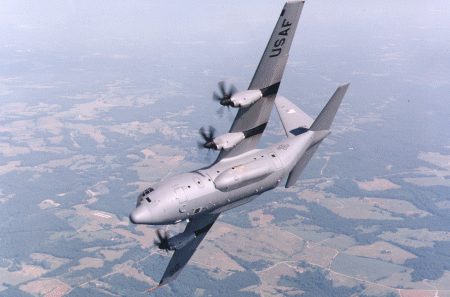Boeing has chosen CATIA as its chief design tool and rival Lockheed Martin's production streamlining is paying off
Graham Warwick/MARIETTA and FORT WORTH Guy Norris/SEATTLE
The aerospace industry is in the grip of a revolution. Its name is "lean" and its guiding principle is the elimination of waste from the production cycle.
The revolution is moving out of the prototyping shops and on to the assembly lines, with dramatic results - and none too soon. The automotive industry has been lean for years. In aerospace, avionics and engine manufacturers embraced lean thinking long before the airframe makers.
Now airframers are moving fast to catch up. Their motivation is the promise of faster development, better quality and lower cost. Flight International reports on how the lean concept is moving from theory to reality in aircraft factories across the USA.
Picking the right tools
In what could be a significant long term company-wide move, Boeing has selected Dassault/IBM's CATIA system as its primary computer-aided design and manufacturing (CAD/CAM) software for the engineering and manufacturing development (EMD) phase of the Joint Strike Fighter (JSF).
Boeing stresses that CATIA and its associated Enovia product data management software have been chosen to suit the best interests of the JSF programme, but adds that "the decision is in line with where most of the company is going". Boeing JSF structures and systems chief engineer Jim O'Neill says the move was influenced by the Phantom Works-led Boeing Break-through Common Processes Programme. This is developing processes which will be applicable to all parts of the company in areas of airframe structural design, wiring, product data management, part fabrication and assembly costing. "We do believe that common processes will bring big benefits," he adds.
CATIA was selected principally over the Unigraphics-based CAD/CAM system employed by the former McDonnell Douglas (MDC) sites on many advanced programmes, including its original JSF work. This is still in use throughout many of the "heritage" MDC sites. Boeing says the new decision does not mean that Unigraphics will be dropped from general use in the near future. Stressing its importance to the JSF in particular, O'Neill says the use of CATIA/Enovia represents a "single source of product data where all the information resides in one source. It is a perfect fit with our lean supportability plans for the JSF. This is therefore a completely holistic decision and not sub-optimised simply for the design phase."
The system allows design, analysis, manufacturing and maintenance engineers to work within a digital mock-up environment. "They [CATIA and Enovia] ensure a standard approach to specifications, engineering rules, operational parameters and simulation results - all of which support JSF development," Boeing says. The company will use the latest version of CATIA, V5, to design the EMD version of the aircraft. It hopes to achieve a 30-35% reduction in cycle time as a result. As part of the selection process, it used version 4.2 of the same software to update the design from the X-32 (Model 373) concept demonstrator to the latest EMD configuration (Model 374), achieving a 20% flow time improvement when benchmarked against older CATIA versions.
CATIA was first used by Boeing for the 777 programme and has since been increasingly employed. It is also expected that CATIA will be used for forthcoming military programmes, including the 737 Wedgetail and F/A-18E/F production design work, as well as for the JSF.
Taking it to the line

With the JSF still a decade away from production, a 45-year-old airframe is in the vanguard of Lockheed Martin's efforts to become a lean enterprise. Development of the upgraded C-130J is essentially complete and deliveries are under way. The company has set itself the target of cutting the transport's price by $10 million to stimulate demand, principally through lean manufacturing.
Lockheed Martin Aeronautical Systems (LMAS) has invested heavily in redesigning the C-130 assembly line to streamline production. Now, it is deploying lean practices to drive costs down further. "We measure lean in cost savings," says vice-president of enterprise productivity William Kessler, who defines lean as "the relentless pursuit of eliminating waste".
While LMAS is in the "very early stages" of the transition to lean practices, he says: "We wanted to move out of the pack of airframe manufacturers." The problem it faced was transforming the decades-old Hercules production line, but Kessler describes the C-130J as the "perfect backbone for lean across the company". With modernisation of the line complete, resulting in a 30% reduction in per-unit assembly man hours, the backbone is in place, he says, and the focus is moving to fabrication.
Single-piece flow, which eliminates unnecessary steps in parts manufacturing, is transforming the back shops. Employees are videotaped at work and involved in redesigning their tasks to eliminate unnecessary actions. At the workers' request, LMAS has accelerated the establishment of 27 single-piece flow fabrication cells and will have all in place by year-end.
Savings from single-piece flow are "big numbers", says Kessler. "Single-piece flow puts all the focus on adding value continuously, rather than keeping workers or machines busy, and it avoids putting things in inventory." Kessler aims to eliminate inventory by delivering parts directly from the fabrication cells to their point of use on the assembly line. Tools and parts are delivered as kits to the appropriate point on the assembly line.
LMAS' experience so far is that saving money means spending money when it comes to lean.
"It costs a little to get the savings," Kessler says, but the C-130J programme shows that the savings gained from lean practices are real.
Source: Flight International























